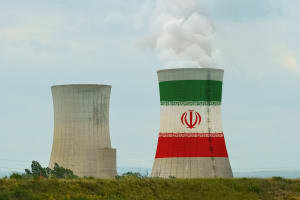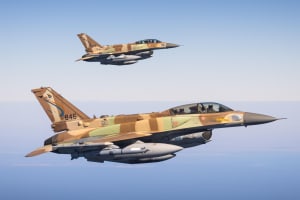Month-long IDF operation in Jabaliya appears close to ending, raising questions about Hamas control of Gaza camps
IDF may be implementing part of ‘Eiland Plan’ to cut Hamas off from humanitarian aid

The neighborhood of Jabaliya, part of greater Gaza City, has been the site of an ongoing, month-long IDF operation to destroy the presence of Hamas.
The current maneuver in Jabaliya represents the third time IDF ground troops have conducted operations in Jabaliya since the start of the Gaza War.
According to a Ynet news report, over the past weekend, Israel Defense Forces once again reinforced its troops in Jabaliya, after appearing to have wrapped up the most intense phase of the raid, withdrawing one of the three brigades last week.
This time, the Kfir Brigade entered Jabaliya to join the long raid, which is now in its second month. There are currently three brigade combat teams of the 162nd Division conducting operations within the encircled city in the northern Gaza Strip.
The Jabaliya operation has enabled the military to effectively isolate the northernmost part of the Gaza Strip, cutting off Jabaliya and nearby towns from the rest of the region.
The move calls into question whether, despite its denials, the IDF is implementing a partial and limited version of a military strategy proposed by retired Maj.-Gen. Giora Eiland, also known as the “Generals’ Plan."
The plan calls for the use of siege warfare to subdue Hamas and help secure the release of Israeli hostages held in the Gaza Strip, as well as evacuating the civilian population from northern Gaza and Israeli control over humanitarian aid distribution.
In the first week of the Jabaliya raid, the IDF ordered tens of thousands of Gazans to evacuate ahead of siege warfare against the remaining Hamas forces. Due to significant pressure from the administration of U.S. President Joe Biden, this siege was loosened, and humanitarian aid to civilians in the area resumed. However, the IDF continued to call on residents to evacuate.
During the past two weeks, Israeli tanks and infantry fighters have secured the area around Jabaliya and have assisted civilians to leave via established escape routes. The IDF has been using facial recognition to prevent known terrorists from leaving, and presumably to check for hidden Israeli hostages.
The “Generals’ Plan” is supported by a number of senior commanders and brigadier generals in the IDF. In addition, the plan has broad support in the Knesset, especially among the coalition government. Some coalition MKs sent a letter to Netanyahu requesting adoption of the plan.
Over the past few weeks, tens of thousands of civilians have fled Jabaliya after significant raids by IDF troops destroyed Hamas' capabilities. The IDF reported it had captured about 600 Hamas terrorists and killed around 900 during combat as part of the operations.
Hamas attempted to re-establish itself in Jabaliya after the IDF began focusing its military efforts on Khan Younis and Rafah in the spring. Analysts say that Hamas has been adapting its strategies against the IDF, learning from previous encounters and attempting to preserve dwindling weapons, ammunition and explosives.
For example, Hamas terrorists in Jabaliya began laying booby traps in the upper floors of buildings, after noticing that soldiers tended to focus more attention on the lower floors, where Hamas had previously set traps.
Several IDF soldiers have been killed or wounded by IEDs on the upper floors of buildings in Jabaliya in recent weeks.
IDF officials told Ynet, “We found an exhausted population, hungry and weak, arriving at our ports of passage and without civilians, Hamas cannot exist.”
The officials also noted that captured terrorists have provided “useful intelligence,” noting, “Interrogations of terrorists have been useful and provide intelligence on where the Hamas planted explosives and where they keep their weapons."
The IDF estimates that several hundred terrorists remain in Jabaliya, requiring a continuation of operations for several more days.
However, Seth Frantzman, senior Middle East Correspondent and analyst for The Jerusalem Post called attention to the issue of Hamas control of the central “refugee camps” in Gaza, such as Nuseirat, El-Bureij, Maghazi, and Deir al-Balah.
Frantzman noted that “Most of them were never cleared of terrorists.”
He argued that because of their control in the camps, Hamas is still able to recruit new fighters, which could potentially lengthen the war for months.
According to Frantzman, the Jabaliya operation “shows how difficult it is to get rid of Hamas.”
“It shows how the raiding tactic hasn’t replaced Hamas governance, and it shows how Hamas digs in, recruits, and exploits civilians and hospitals, as well as schools for cover.”

The All Israel News Staff is a team of journalists in Israel.














